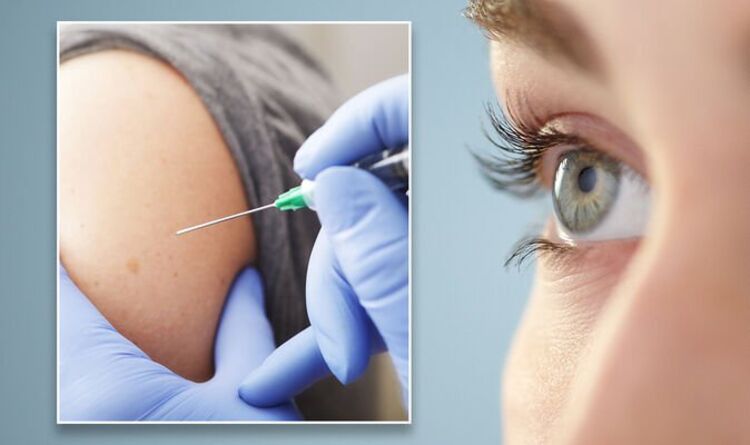Eyesight: New treatment to improve sight currently undergoing clinical trials in the UK
Boris Johnson suggests coronavirus affected his eyesight
We use your sign-up to provide content in ways you’ve consented to and to improve our understanding of you. This may include adverts from us and 3rd parties based on our understanding. You can unsubscribe at any time. More info
Faricimab is a drug often used to treat conditions relating to sight loss. When injected into the eye it stops fluid leaking into the retina; a crucial role as it is this leaking that causes both diabetic macular oedema and wet-AMD. Traditionally, treatment for these conditions involved injecting medicines into the affected eye once a month.
The decision to approve treatment using the drug was assisted by a global study that found nearly half of patients on faricimab were able to go at least four months without needing their next injection.
Professor Ian Pearce of Liverpool University Hospitals NHS Foundation Trust, said: “The option to extend the interval between injections would be really welcomed by patients.”
The professor added: “This drug has the potential to make a big difference to patient’s lives and allow them to spend less time in hospital.”
READ MORE: Gloria Hunniford health: Presenter’s diagnosis came as a ‘huge shock’

What makes both of these conditions treatable with the same drug is because the same action occurs
In both wet-AMD and diabetic macular degeneration both conditions result in leakage in the retina and damage to the blood vessels close to the eye results in the macular swelling.
Faricimab isn’t the only treatment for macular degeneration that is being trialled.
Known as the Smaller-Incision New-Generation Implantable Miniature Telescope (SING IMT), the device, says the manufacturer, is “designed to improve visual acuity and quality of life for patients with late-stage AMD”.
So far, the device, aimed at patients aged 55 and above, has been successfully implanted in a number of patients based in Rome.
Age-related macular degeneration is one of the most common eye conditions in the UK.
Although it does not render the sufferer completely blind, it can significantly affect their quality of life.

There are two forms of the condition, dry AMD and wet-AMD.
Dry AMD develops over several years while wet AMD develops over a matter of weeks or months.
Symptoms of the condition, that affects the middle part of someone’s vision, include a blurred or distorted area of vision, seeing straight lines as wavy or crooked, objects looking smaller than normal, colours seeming less bright than they used to, and hallucinations.
The NHS recommends that an individual should see an optician if their vision suddenly gets worse, or if they develop a dark curtain or shadow across their vision, or the eye becomes red and painful.

Although these are not symptoms of AMD, they may be a symptom of something serious.
Those at greater risk of eye disease than others say the NHS people over the age of 60, individuals from certain ethic groups, with learning disabilities.
Furthermore, people who come from a family with a history of eye disease also have an increased risk.
For more information on treatment for AMD contact the NHS or consult with your GP.
This article previously stated the faricimab treatment would be available on the NHS. This has since been corrected – Faricimab is not currently available on the NHS, it doesn’t yet have a UK (or EMA) license. Roche is in the process of working with the Medicines and Healthcare products Regulatory Agency (MHRA).
Source: Read Full Article
